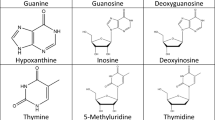Abstract
Although the sera used in animal cell culture media provide the macromolecules, nutrients, hormones, and growth factors necessary to support cell growth, it could also be an obstacle to the production of recombinant proteins in animal cell culture systems used in many sectors of the biotechnology industry. For this reason, many research groups, including our laboratory, have been trying to develop serum-free media (SFM) or serum-supplemented media (SSM) for special or multi-purpose cell lines. The Chinese hamster ovary (CHO) cell, for example, is frequently used to produce proteins and is especially valuable in the large-scale production of pharmaceutically important proteins, yet information about its genome is lacking. Also, SFMs have only been evaluated by comparing growth patterns for cells grown in SFMs with those grown in SSM or by measuring the titer of the target protein obtained from cells grown in each type of medium. These are not reliable methods of obtaining the type of information needed to determine whether an SFM should be replaced with an SSM. We carried out a cDNA microarray analysis to evaluate MED-3, an SFM developed in our laboratory, as a CHO culture medium. When CHO cells were cultured in MED-3 instead of an SSM, several genes associated with cell growth were down-regulated, although this change diminished over time. We found that the insulin-like growth factor (IGF) gene was representative of the proteins that were down-regulated in cells cultured in MED-3. When several key supplements-including insulin, transferrin, ethanolamine, and selenium-were removed from MED-3, theIGF expression was consistently down-regulated and cell growth decreased proportionately. Based on these results, we concluded that when an SFM is used as a culture medium, it is important to supplement it with substances that can help the cells maintain a high level ofIGF expression. The data presented in this study, therefore, might provide useful information for the design and development of SFM or SSM, as well as for the design of genome-based studies of CHO cells to determine how they can be used optimally for protein production in pharmaceutical and biomedical research.
Similar content being viewed by others
References
Gstraunthaler, G. (2003) Alternatives to the use of fetal bovine serum: serum-free cell culture.ALTEX 20: 275–281.
Kwon, M. S., T. Dojima, and E. Y. Park (2003) Comparative characterization of growth and recombinant protein production among three insect cell lines with four kinds of serum free media.Biotechnol. Bioprocess Eng. 8: 142–146.
Tey, B. T. and M. Al-Rubeai (2005) Bcl-2, over expression reduced the serum dependency and improved the nutrient metabolism in a NS0 cells culture.Biotechnol. Bioprocess Eng. 10: 254–261.
Lockhart, D. J. and E. A. Winzeler (2000) Genomics, gene expression and DNA arrays.Nature 405: 827–836.
Schena, M., D. Shalon, R. W. Davis, and P. O Brown (1995) Quantitative monitoring of gene expression patterns with a complementary DNA microarray.Science 270: 467–470.
Ahn, S. K., T.-B. Choe, and T.-J. Kwon (2003) The gene expression profile of human umbilical vein endothelial cells stimulated with lipopolysaccharide using cDNA microarry analysis.Int. J. Mol. Med. 12: 231–236.
Marcotte, E. R. L. K. Srivastava, and R. Quirion (2003) cDNA microarray and proteomic approaches in the study of brain diseases Focus on schizophrenia and Alzheimer's disease.Pharmacol. Ther. 100: 63–74.
Wlaschin, K. F., P. M. Nissom, M. L. Gatti, P. F. Ong, S. Arleen, K. S. Tan, A. Rink, B. Cham, K. Wong, M. Yap, and W. S. Hu (2005) EST sequencing for gene discovery in Chinese hamster ovary cells.Biotechnol. Bioeng. 91: 592–606.
Layzer, R. B., L. P. Rowland, and H. M. Ranney (1967) Muscle phosphofructokinase deficiency.Arch. Neurol. 17: 512–523.
Canesi, L., C. Ciacci, M. Betti, and G. Gallo (2000) Growth factor-mediated signal transduction and redox balance in isolated digestive gland cells fromMytilus galloprovincialis Lam.Comp. Biochem. Physiol. C Toxicol. Pharmacol. 125: 355–363.
Cormont, M. and Y. L. Marchand-Brustel (2001) The role of small G-proteins in the regulation of glucose transport.Mol. Membr. Biol. 18: 213–220.
Dupont, J. and R. D. Le (2001) Insulin-like growth factor 1 and oestradiol promote cell proliferation of MCF-7 breast cancer cells: new insights into their synergistic effects.Mol. Pathol. 54: 149–154.
Strobl, J. S., W. F. Wonderlin, and D. C. Flynn (1995) Nitogenic signal transduction in human breast cancer cells.Gen. Pharmacol. 26: 1643–1649.
Kim, J.-S., M.-K. Min, and E.-C. Jo (2001) High-level expression and characterization of single chain urokinase-type plasminogen activator (scu-PA) produced in recombinant Chinese hamster ovary (CHO) cells.Biotechnol. Bioprocess Eng. 6: 117–127.
Kao, F. T. and T.T. Puck (1968) Genetics of somatic mammalian cell, VII. Induction and isolation of nutritional mutants in Chinese hamster cells.Proc. Natl. Acad. Sci. USA 60: 1275–1281.
Niall, H. D., M. L. Hogan, R. Sauer, I. Y. Rosenblum, and F. C. Greenwood (1971) Sequences of pituitary and placental lactogenic and growth hormones: eyolution from a primordial peptide by gene reduplication.Proc. Natl. Acad. Sci. USA 68: 866–869.
McCarthy, A. A. (2004) Elixir pharmaceuticals: targeting molecular sources of aging.Chem. Biol. 11: 733–734.
Voskuil, D. W., A. Vrieling, L. J. van't Veer, E. Kampman, M. A. Rookus (2005) The insulin-like growth factor system in cancer prevention: potential of dietary intervention strategies.Cancer Epidemiol. Biomarkers Prev. 14: 195–203.
Daughaday, W. H., K. Hall, M. S. Raben, W. D. Salmon, Jr., J. L. van den Brande, and J. J. van Wyk (1972) Somatomedin: proposed designation for sulphation factor.Nature 235: 107.
Rinderknecht E. and R. E. Humbel (1978) The amino acid sequence of human insulin-like growth factor I and its structural homology with proinsulin.J. Biol Chem. 255: 2769–2776.
Sherr, C.J. (1993) Mammalian G1 cyclins.Cells 73: 1059–1065.
Oh, M.-K, D. R. Scoles, and S.-M. Pulst (2005) DNA microarray analysis of immediate response to EGF treatment in rat schwannoma cells.Biotechnol. Bioprocess Eng. 10: 444–450.
Author information
Authors and Affiliations
Corresponding author
Rights and permissions
About this article
Cite this article
Park, H., An, S. & Choe, T. Change of insulin-like growth factor gene expression in Chinese hamster ovary cells cultured in serum-free media. Biotechnol. Bioprocess Eng. 11, 319–324 (2006). https://doi.org/10.1007/BF03026247
Received:
Accepted:
Issue Date:
DOI: https://doi.org/10.1007/BF03026247




